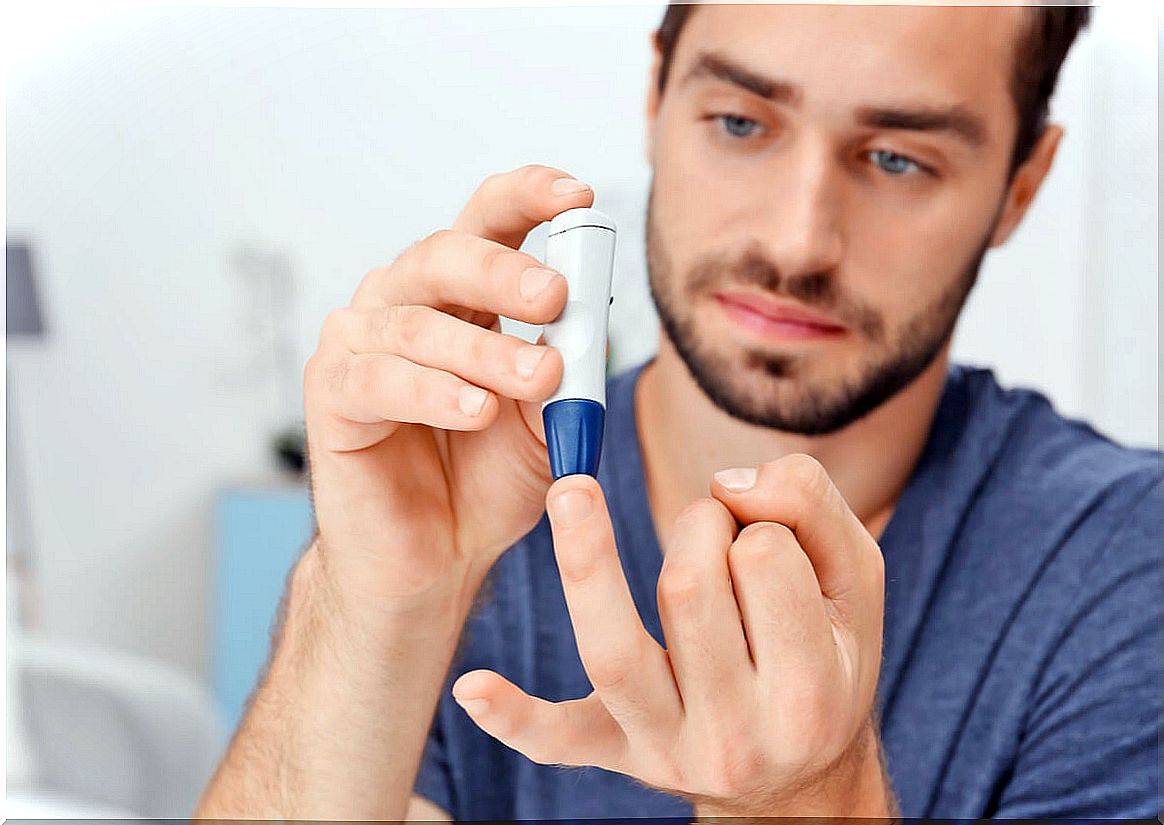Why Is The Mouth Dry In People With Diabetes?
People with diabetes, whether type 1 or type 2, often have xerostomia . This term is used to refer to a dry mouth, a common sensation in people with diabetes. The problem is that it is not just a sensation, but it can have serious consequences at the oral level.
Xerostomia is associated with an increased risk of tooth decay, infection, and periodontal disease. Different investigations affirm that more than 70% of people with diabetes experience this symptom. Therefore, in this article we explain why it happens and how to solve it.
What symptoms do people with diabetes have?
Diabetes mellitus is a disease that affects glucose metabolism. There are two main forms: type 1 and type 2. In the first, what happens is that the pancreas is unable to secrete insulin.
In type 2 there is resistance to insulin in the different tissues of the body, although there may also be a decrease in its secretion. It is a pathology that, unfortunately, is becoming more and more frequent.
Xerostomia is one of its main symptoms. So much so that, according to a review study published in the Journal of Endocrinology and Nutrition, it is among the most common oral manifestations in people with diabetes.
Other oral symptoms that may appear are ulcers, pharyngeal candidiasis and a burning sensation. However, these are not the only signs. There is also polyuria (increased urination), polydipsia (increased thirst), and weight changes.

Why does a dry mouth occur in diabetes?
Xerostomia, as we have mentioned, is the term used to refer to dry mouth. In people with diabetes, its appearance is influenced by different factors, almost all related to poor control of blood sugar levels.
First of all, one of the causes is increased urination. By urinating more, a situation of dehydration occurs. Saliva is made up mostly of water, so its production is altered when body fluids become out of adjustment.
Another similar factor that determines a dry mouth in diabetes is the change in the composition of saliva. It is made up of, in addition to water, glucose and proteins.
A study published in the Journal of Oral Medicine and Pathology explains that diabetes affects the morphology of the salivary glands. It produces the so-called diabetic sialosis , which consists of the salivary glands increasing in size. This causes its performance to be impaired.
Other causes of xerostomia
Although a large percentage of people with diabetes suffer from xerostomia, this disease is not the only cause. It is important to note that the production of saliva is influenced by many factors and that many situations can trigger this disorder.
For example, dehydration that is not related to diabetes. Similarly, medications can give rise to this symptom, especially those used in chemotherapy treatments.
Older age is also often associated, as are other chronic diseases, such as cirrhosis, HIV, and tuberculosis. Sjögren’s syndrome is another of the most relevant causes of xerostomia.
Solutions for dry mouth in people with diabetes
The importance of a dry mouth in diabetes lies not only in the discomfort it produces, but it can lead to a series of oral problems. For example, it increases the risk of tooth decay and infection, as well as periodontal disease.
Therefore, it is essential to carry out preventive measures that avoid and prevent this type of pathology. First of all, people with diabetes should strengthen their oral hygiene. It is recommended to use mouthwash and dental floss, in addition to brushing.
It is best to avoid sugary and acidic liquids. It is essential to stay hydrated, but it is best to do so by drinking water. Frequent visits to the dentist are essential, since they must review and correct any alteration that has occurred early.
In addition, in some cases medications that stimulate salivary flow are prescribed. You can even use artificial saliva. These measures are reserved for cases in which xerostomia cannot be solved with general measures.

To remind
People with diabetes are at higher risk for dry mouth. This is because the disease modifies both the composition of saliva and the morphology of the salivary glands.
In order to avoid this, it is necessary to keep good blood glucose control. In addition, proper hydration and taking special care with oral hygiene are essential requirements to reduce complications.









